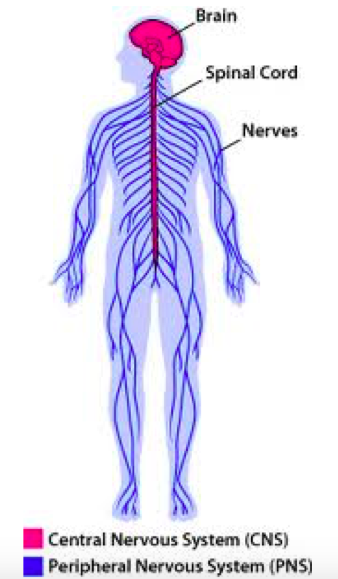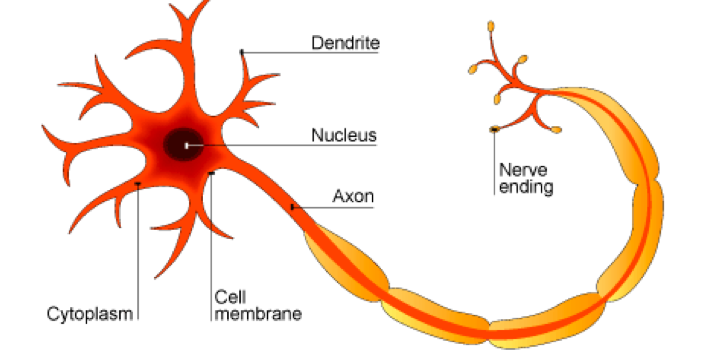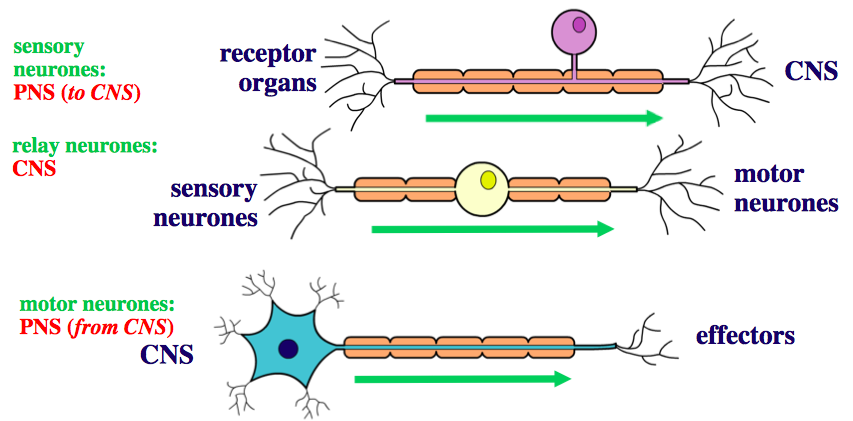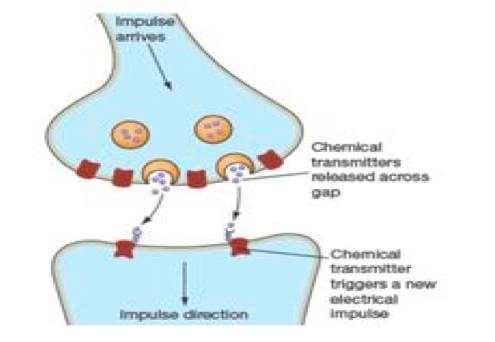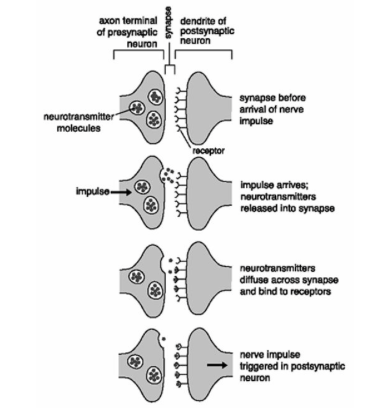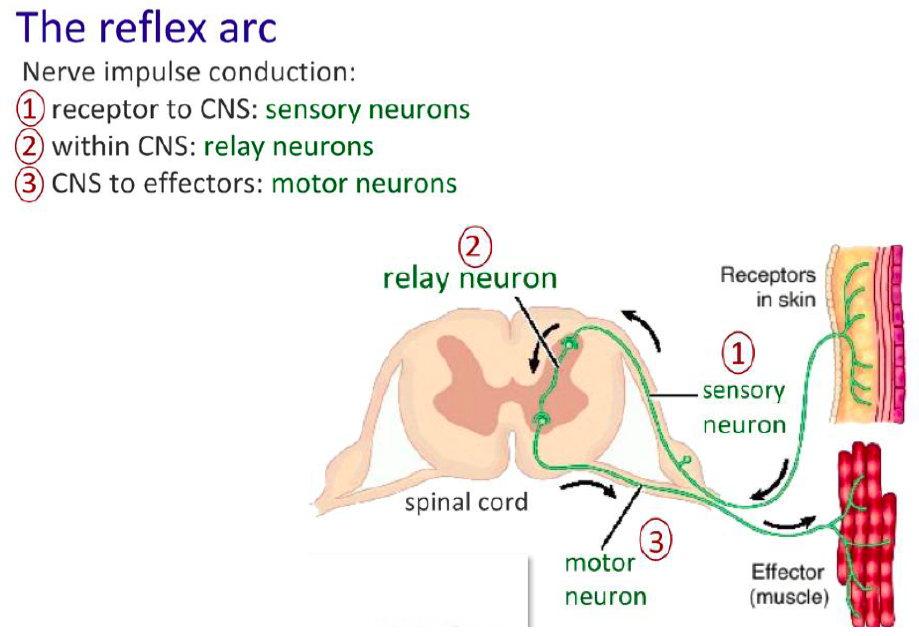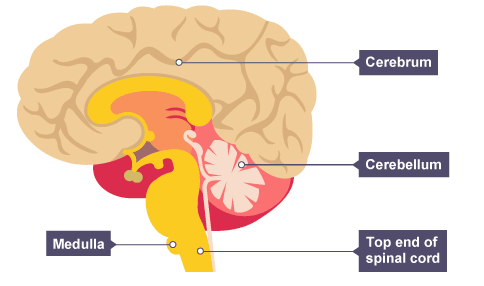Nervous System
Nervous System
The nervous system enables humans to react to their surroundings and to coordinate their behaviour.
The nervous system uses electrical impulses to bring about fast, but short-lived, responses. These responses enables organisms to react to their surroundings and co-ordinate their behaviour.
The nervous system consists of the brain and spinal cord, which together form the central nervous system (CNS). The CNS is linked to sense organs by neurones, which form the peripheral nervous system (PNS).
Neurones (nerve cells) are specialised cells which carry electrical impulses.
Axons are insulated by a fatty myelin sheath. Axons are normally long and thin, and they are used to carry messages all round the body. Dendrites receiving incoming impulses from other neurones.
There are three types of neurones that transfer electrical signals to different areas:
Nerve impulses can’t cross the gap between neurons. However, chemicals can cross them instead. The gap between two neurones is called the synapse.
In the synapse, an electrical signal is converted into a chemical signal, which is then converted back to an electrical signal on the other side of the synapse (this is the beginning of another neurone). Here is a diagram of the process of neurotransmission:
Pathways
- A stimulus is detected by a receptor.
- The receptor converts this information into an electrical signal (known as an impulse).
- This impulse is transmitted from the receptor to the CNS along sensory neurones
- The CNS coordinates the information and sends another impulse in response.
- This impulse passes along motor neurones to the relevant effector (normally a muscle or a gland) to bring about a response.
stimulus → receptor → coordinator → effector → response
Reflex Arc
Reflex actions are rapid, automatic responses of the nervous system which do not involve the involvement of the brain (i.e. without conscious thought). Instead the signals pass directly from a sensory neurone, via a relay neurone, to a motor neurone for an instant, unthinking action.
This nervous pathway is known as a reflex arc. It is extremely important because it allows us to avoid danger or harm. It also allows us to coordinate everyday bodily functions.
Brain
The brain controls complex behaviour. It is made of billions of interconnected neurones and has different regions that carry out different functions.
The brain is a highly complex organ, and it controls how the body works. The following are the important parts of the brain that you will need to remember:
| Part of the Brain | Function |
| Cerebral Cortex | Controls consciousness, intelligence, memory and language |
| Cerebellum | Needed for the coordination of muscular activity |
| Medulla | Controls unconscious activities such as the beating of the heart and breathing |
Here is a diagram of the brain:
Investigating the Brain
The more the scientists understand how the brain works, the more likely they will be able to cure different types of brain damage and diseases.
Neuroscientists have been able to map the regions of the brain to particular functions by studying patients with brain damage, electrically stimulating different parts of the brain and using MRI scanning techniques. The complexity and delicacy of the brain makes investigating and treating brain disorders very dif cult.
Doctors need to be extremely careful when deciding whether they want to operate on the brain and other parts of the nervous system. These surgeries carry an extremely high level of risk due to the complexity and delicacy of the brain. If any damage is done to the nerve cells, the conditions that follow are permanent as those cells simply cannot regrow.
It is also vital that patients can provide consent for scientists to study their damaged brains. Patients should be capable of making clear decisions about their participation of the research.
- What is the central nervous system made up of?
- Your answer should include: Brain / Spinal / Cord
- What is the use of the medulla?
- Your answer should include: Unconscious / Activities / Beating / Heart / Breathing
Explanation: Medulla controls unconscious activities such as the beating of the heart and breathing. - What are the three types of neurones?
- Your answer should include: Sensory / Relay / Motor
